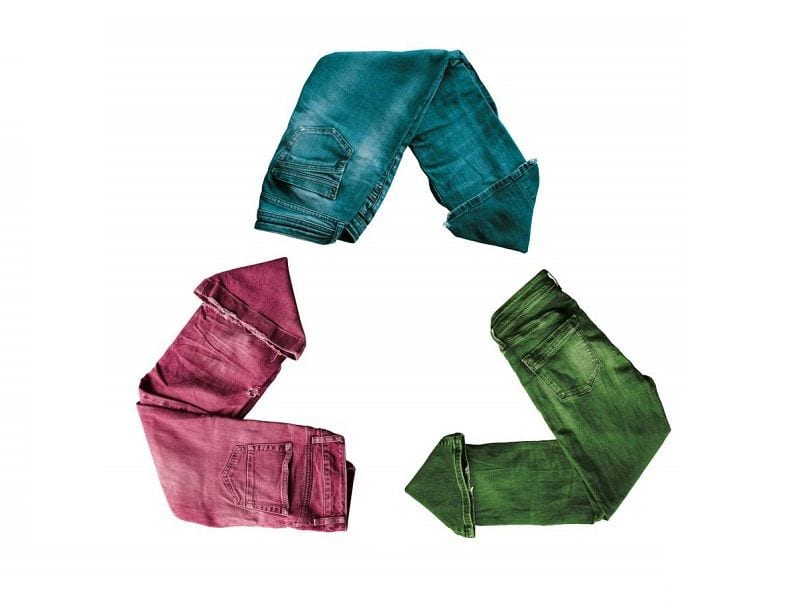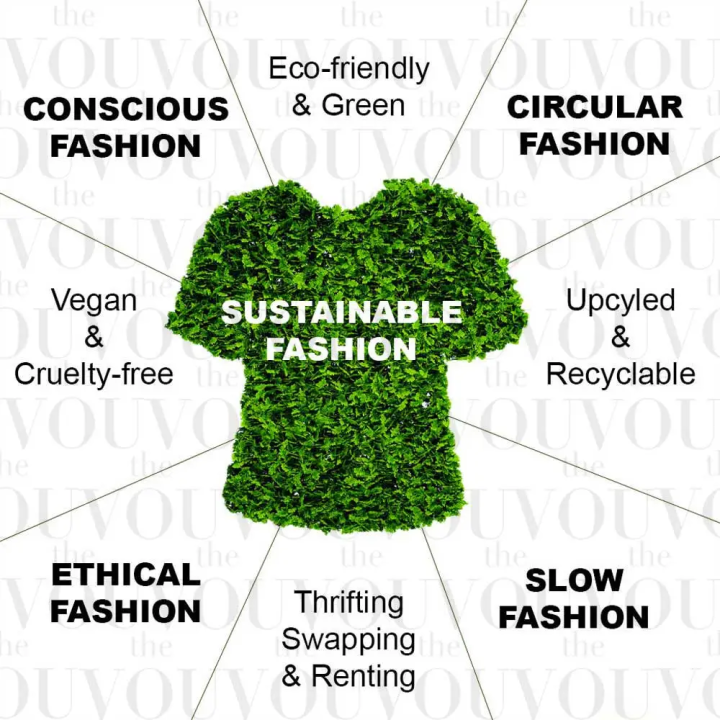Cape Town Sustainable Fashion: Ethical Apparel for a Better Earth
Cape Town Sustainable Fashion: Ethical Apparel for a Better Earth
Blog Article
Remain Ahead of the Contour by Exploring Innovative Style Trends
In a market as dynamic as fashion, remaining ahead includes greater than just complying with present trends-- it demands an exploration of development. Smart textiles, as an example, are changing garments into functional work of arts, while 3D printing is transforming layout procedures with its customizable, waste-reducing abilities. As sustainability becomes a cornerstone, technologies like green products and circular style techniques are reshaping ecological duty - Cape Town Sustainable Fashion. Moreover, the convergence of innovation and fashion advertises a new period of consumer involvement. How, after that, can these arising fads redefine the future of fashion, and what effects do they hold for brand names looking for to thrive in this advancing landscape?

Embracing Smart Textiles
In the last few years, the style sector has experienced a transformative change with the integration of smart fabrics, an advanced development that mixes technology with textile. This evolution stands for not only a fusion of looks and functionality yet likewise a considerable leap in the direction of sustainability and customization in vogue. Smart fabrics, additionally called e-textiles, installed sophisticated electronics such as sensors and conductive threads within the fabric, enabling garments to interact with the wearer or the atmosphere.
These textiles are designed to monitor physical criteria, such as heart rate or body temperature level, supplying real-time health and wellness analytics. Beyond wellness applications, clever fabrics are additionally being used for adaptive clothing, which can change shade or pattern in reaction to ecological stimuli, thus supplying a vibrant fashion experience.
Furthermore, the growth of energy-harvesting textiles that create power from activity or sunlight is leading the way for self-sufficient wearable innovation. This innovation is appealing to ecologically conscious consumers and designers aiming to reduce the environmental impact of fashion. As r & d in this field development, clever textiles are expected to become progressively prevalent, reshaping the landscape of modern-day fashion with their multifunctional capabilities.
The Rise of 3D Printing
Revolutionizing the production landscape, 3D printing has actually emerged as a game-changer in the apparel industry. This sophisticated technology has actually made it possible for developers to press the boundaries of creativity, producing complex and tailored garments that were formerly unthinkable. By leveraging digital layout and additive production, 3D printing facilitates the creation of intricate geometries and patterns, enabling developers to explore brand-new appearances and frameworks.
A remarkable benefit of 3D printing in vogue is its ability to create on-demand, decreasing waste and minimizing inventory requirements. This efficiency not only enhances production processes however additionally permits rapid prototyping, enabling designers to bring their visions to life in a much shorter duration. Moreover, 3D printing sustains personalization to a level unequaled by conventional techniques, using special layouts and individualized fits customized to private consumer choices.
The rise of 3D printing has actually additionally democratized fashion, making it available to arising designers who can currently produce premium pieces without considerable monetary investment in traditional manufacturing facilities. As innovation continues to development, the apparel industry is positioned to harness the full potential of 3D printing, discovering new products and methods that will most certainly redefine exactly how fashion is developed and produced.
Lasting Fashion Advancements
As the garment industry grapples with journalism demand for environmental responsibility, sustainable fashion innovations have actually emerged at the forefront of transformative modification. The expanding awareness of environmental impact has actually fueled a shift in the direction of more eco-conscious practices and materials. Brand names and developers are now prioritizing sustainability, incorporating methods that lessen waste and reduce carbon footprints.
One substantial growth is the surge of round style, which emphasizes recycling and upcycling to expand the lifecycle of garments. This strategy not only minimizes waste but also motivates customers to adopt a more mindful approach to apparel intake.
An additional development hinges on the adoption of cutting-edge dyeing methods that use natural dyes or waterless procedures, thereby decreasing the huge amounts of water and chemicals typically used in fabric dyeing. Additionally, improvements in biotechnology have actually resulted in the creation of lab-grown natural leather and textiles, providing ecologically pleasant and cruelty-free options to standard products. With these introducing efforts, the fashion business is making meaningful strides towards an extra sustainable future.

Tech-Integrated Clothing
Tech-integrated garments stands for a groundbreaking combination of fashion and innovation, improving exactly how people connect with their apparel. This cutting-edge domain is noted by the incorporation of wise textiles and ingrained electronic elements, improving both capability and visual allure. From physical fitness trackers embedded in sportswear to heated coats regulated through smartphone apps, tech-integrated apparel offers consumers extraordinary ease and flexibility.
Introducing brand names are driving this pattern, concentrating on creating garments that reply to ecological stimuli or customer commands. As an example, some garments can transform shade or pattern in feedback to temperature get more changes, while others integrate biometric sensing units to monitor health metrics like heart rate or stress and anxiety levels. The seamless combination of modern technology right into textiles additionally includes environmental sustainability, with initiatives to create self-cleaning materials or garments that adapt to climate condition, therefore minimizing the need for several layers.
In addition, the introduction of wearable modern technology is not simply restricted to garments however encompasses accessories like watches and eyewear, further expanding the extent of tech-integrated style. As the market remains to introduce, the potential for personalization and customization in garments expands, using consumers distinct, tech-enhanced fashion experiences that deal with their specific requirements and preferences.
Future of Virtual Style
In the last few years, the future of digital fashion has become a transformative pressure within the market, leveraging improvements in electronic technology to redefine just how fashion is produced, experienced, and taken in. By integrating increased truth (AR), virtual reality (VIRTUAL REALITY), and 3D design tools, designers can now craft immersive and interactive experiences that transcend typical fashion borders. Digital fashion permits the development of garments that exist only in electronic environments, offering unlimited opportunities for innovation without the restrictions of physical production.
This digital shift not only presents opportunities for innovative expression but additionally addresses sustainability problems fundamental in standard style practices. see this site Cape Town Sustainable Fashion. By removing the requirement for physical resources, online fashion reduces waste and reduces carbon footprints. Furthermore, the surge of virtual style straightens with the enhancing customer need for special and personalized experiences, as online garments can be tailored and tailored to private preferences effortlessly

Final Thought
The apparel industry's future lies in the integration of lasting methods and cutting-edge innovations - Cape Town Sustainable Fashion. Smart fabrics and tech-integrated garments are enhancing functionality, helpful hints while 3D printing supplies possibilities for customization and waste decrease. Sustainable fashion, with circular approaches and environment-friendly products, demonstrates a commitment to environmental stewardship. Moreover, online style is positioned to redefine consumer communications. Adapting to these fads is important for brands looking for to remain appropriate and affordable in this swiftly developing landscape.
In current years, the style industry has seen a transformative shift with the combination of smart fabrics, a cutting-edge development that blends innovation with textile.As the style sector grapples with the pressing demand for environmental responsibility, lasting style innovations have arised at the center of transformative modification.In recent years, the future of online fashion has actually emerged as a transformative force within the industry, leveraging improvements in electronic modern technology to redefine how style is created, experienced, and eaten. The surge of digital fashion lines up with the boosting customer demand for individualized and special experiences, as virtual garments can be personalized and tailored to specific preferences with convenience.
The style sector's future lies in the combination of ingenious technologies and lasting techniques.
Report this page